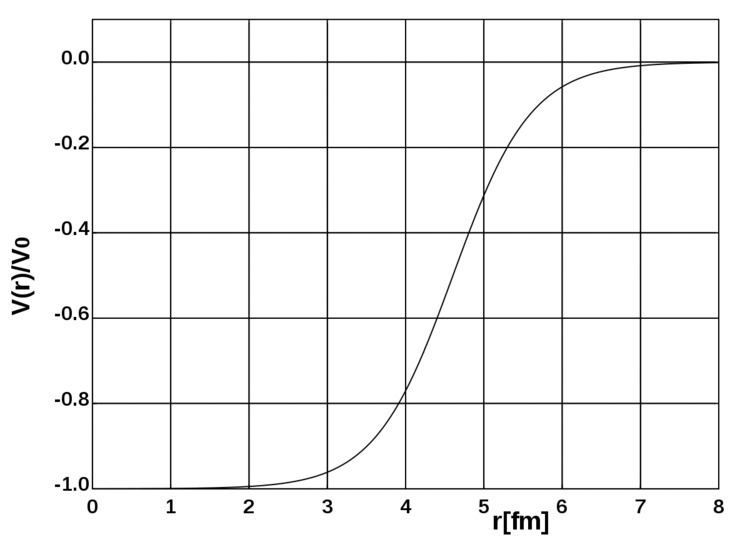 | ||
The Woods–Saxon potential is a mean field potential for the nucleons (protons and neutrons) inside the atomic nucleus, which is used to describe approximately the forces applied on each nucleon, in the nuclear shell model for the structure of the nucleus.
The form of the potential, as a function of the distance r from the center of nucleus, is:
where V0 (having dimension of energy) represents the potential well depth, a is a length representing the "surface thickness" of the nucleus, and
Typical values for the parameters are: V0 ≈ 50 MeV, a ≈ 0.5 fm.
For large atomic number A this potential is similar to a potential well. It has the following desired properties
When using the Schrödinger equation to find the energy levels of nucleons subjected to the Woods–Saxon potential, it cannot be solved analytically, and must be treated numerically.
